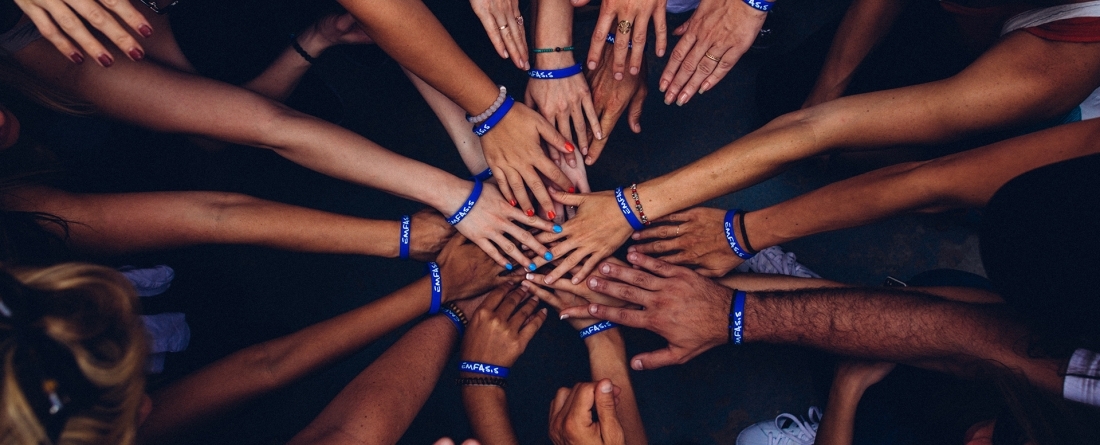
Fewer Americans Are Volunteering and Giving Than Any Time in the Last Two Decades
Do Good Institute’s New Report Examines Trends for all 50 States, 215 Metro Areas
The United States recently experienced record highs in total volunteer hours and charitable dollars given to community organizations, however these seemingly positive numbers mask a troubling trend: fewer Americans are engaging in their community by volunteering and giving than in any time in the last two decades. In the first of its kind analysis of data collected by the United States Census Bureau and the Bureau of Labor Statistics, the Do Good Institute’s report, “Where are America’s Volunteers?” analyzes adult civic engagement (through giving and volunteering) with community organizations and how the recent national decline in American volunteering played out in all 50 states (plus the District of Columbia) and 215 metropolitan areas.
Each year, volunteers work with congregations, charities and other nonprofit organizations to provide needed services of all types to communities. Volunteering has long been recognized as an influential activity for creating productive and engaged citizens and has been seen to help strengthen communities and help volunteers themselves. Volunteers are more likely to stay stronger emotionally, mentally and physically as they age. Other types of civic participation are encouraged, antisocial behavior is discouraged, and socioeconomic achievement is promoted through the act of volunteering. Volunteers help build a community’s social capital by working together with their neighbors, finding ways to cooperate and compromise, and becoming more aware and understanding of each of our differences.
This report uses data from the Current Population Survey (CPS) conducted by the Census Bureau and Bureau of Labor Statistics annually from 2002 through 2015, to calculate volunteering byadults (aged 16 and over). Community organizations have received record highs in total volunteer hours served (in 2014, individuals volunteered 8.7 billion hours of their time) and in charitable dollars given ($410.02 billion in 2017). However, since 2005 the national volunteer rate has declined from 28.8 percent to a fifteen-year low of 24.9 percent in 2015. If the volunteer rate had not declined at all between 2004 and 2015, over 9.8 million more Americans would have volunteered in 2015. Similarly, the percentage of Americans giving to nonprofits annually declined from 66.8 percent in 2000 to 55.5 percent in 2014.
“As a nation, we must commit resources and time to the challenging work of putting more Americans back to work improving and engaging with their communities,” said Robert Grimm, Director of the Do Good Institute at the University of Maryland. “Continued declines in community participation will produce detrimental effects for everyone, including greater social isolation, less trust in each other, and poor physical and mental health.”
The report also analyzes data on all 50 states (plus the District of Columbia) as well as 215 metropolitan areas to explore how the significant decline in volunteering played out in their geographical areas and to explain these national trends. Throughout the country, 31 states experienced significant declines in volunteering between 2004 and 2015, while not one state experienced a significant increase in volunteering over that time period. This decline is surprisingly more prevalent in states historically rich in social capital – which is generated by positive interactions between individuals, is closely tied to how, and how often, individuals engage in social and civic affairs.
The data also suggest that rural and suburban areas – which historically have higher levels of social capital than urban areas – have seen the biggest declines in volunteer rates in recent years. Between 2004 and 2015, the volunteer rates dropped by more than five percentage points in rural areas, and nearly five percentage points in suburban areas. These trends help explain why significant changes in volunteer rate occurred less often among metropolitan areas than at the state level. Between 2004-2006 and 2013-2015, 57 metro areas (out of 215) experienced a significant decrease 147 metro areas experienced no change, and only 11 produced a significant increase in volunteering.
As Nathan Dietz, Associate Research Scholar in the Do Good Institute, observes, “For more than fifty years, researchers have used data from the Current Population Survey to generate reliable statistics on a wide variety of topics. After using the CPS Volunteer Supplement to look at time trends in states and metro areas, we were surprised to find that the recent declines in the national volunteer rate have been strongly influenced by declines in communities that have historically been strongest in volunteering.”
The analysis of state and metropolitan areas shows that volunteer rates tended to decline in metropolitan areas with fewer places to volunteer, in places where people may be less likely to know their neighbors (like large cities with lower homeownership rates and a higher percentage of multi-unit housing), and in places where there is more economic distress (from high unemployment to high poverty rates).
An appendix containing national, state, and metropolitan-level statistics on volunteering and giving for adults is available for download at go.umd.edu/volunteersappendix.
